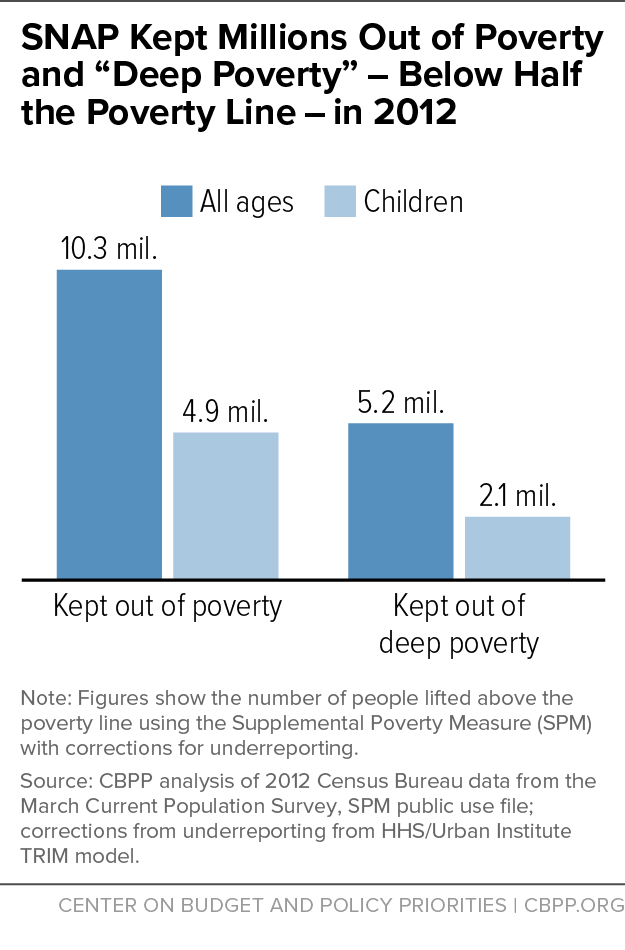BEYOND THE NUMBERS
SNAP (formerly food stamps) not only helps a wide-ranging group of children, as my colleague Dottie Rosenbaum has described, it lifts millions of them out of poverty, protecting them from the long-term effects of growing up poor.
Poor children lag behind non-poor children on a wide range of indicators of physical, mental, academic, and economic well-being, research shows, and they’re likelier to have health, behavioral, learning, and emotional problems. That’s especially true of poor children whose families experience deep poverty (income below half of the poverty line), those who are poor during early childhood, and those who are poor for a long time.
SNAP helps protect millions of low-income children from those ill effects, as we detail in our new paper.
- SNAP lifts millions of households out of poverty. SNAP kept about 10.3 million people out of poverty in 2012, including about 4.9 million children, according to a CBPP analysis that uses the Supplemental Poverty Measure — which counts SNAP as income — and corrects for households’ underreporting of benefits.
- SNAP also lifts millions of households out of deep poverty. SNAP directs more benefits to the lowest-income families, enabling it to lift many very low-income children closer to the poverty line — which is especially important to giving the poorest children a better start. SNAP lifted 2.1 million children out of deep poverty in 2012, more than any other government assistance program, a CBPP analysis found (see chart).
- SNAP is a powerful antidote to extreme poverty. The number of extremely poor families — those living on less than $2 per person a day — more than doubled between 1996 and 2011, and the number of extremely poor children doubled. However, counting SNAP benefits as income cuts the number of extremely poor households in 2011 by nearly half (from 1.6 million to 857,000) and, when combined with supports like housing assistance and refundable tax credits, cuts the number of extremely poor children by more than half (from 3.6 million to 1.2 million).
- SNAP responds to higher poverty during economic downturns. Children who fall into poverty during a recession later fare worse on many outcomes — poverty status, earnings, educational achievement, and health — than their peers who avoid poverty, evidence suggests, and these differences persist in adulthood. In addition, economic hardship appears to profoundly affect children, especially boys, putting them at greater risk of emotional and behavioral problems. SNAP’s ability to quickly respond when unemployment and poverty rise may mitigate such long-term effects.
Tomorrow, we’ll cover how SNAP helps families put food on the table.

